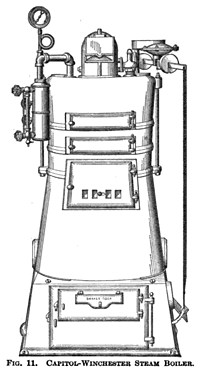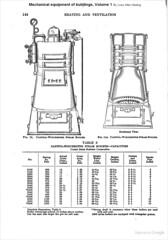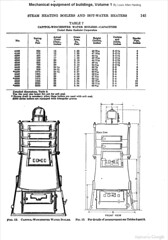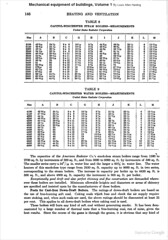 The duplex I live in is heated by a hot water boiler system. It's the first place I've lived since childhood with a boiler, and I was excited about it. For the uninitiated, boiler/radiator heating is very different than forced-air heat from a furnace and duct system. Air has very little thermal mass, so it heats up and cools down quickly. It also rises to the ceiling, so your head is too warm, while your feet are perpetually chilly. Radiators are made from heavy cast iron, and have a LOT of thermal mass. They take a long time to warm up, but they retain a lot of heat energy for a very long time. The biggest benefit is that the warmth from radiators is transmitted by means of radiation as well as convection into the air. Radiant heat is the same heat you can feel when the sun shines on you or you are standing near a campfire. Radiation travels in all directions through space until it is blocked by something. This means that as long as the radiator is "shining" on your body, you will be receiving warmth. Try that with forced-air, which has only become so popular because it allows for central air conditioning. But enough with theory, let's look at the equipment and then the experiment...
The duplex I live in is heated by a hot water boiler system. It's the first place I've lived since childhood with a boiler, and I was excited about it. For the uninitiated, boiler/radiator heating is very different than forced-air heat from a furnace and duct system. Air has very little thermal mass, so it heats up and cools down quickly. It also rises to the ceiling, so your head is too warm, while your feet are perpetually chilly. Radiators are made from heavy cast iron, and have a LOT of thermal mass. They take a long time to warm up, but they retain a lot of heat energy for a very long time. The biggest benefit is that the warmth from radiators is transmitted by means of radiation as well as convection into the air. Radiant heat is the same heat you can feel when the sun shines on you or you are standing near a campfire. Radiation travels in all directions through space until it is blocked by something. This means that as long as the radiator is "shining" on your body, you will be receiving warmth. Try that with forced-air, which has only become so popular because it allows for central air conditioning. But enough with theory, let's look at the equipment and then the experiment...The landlord and property manager are both pretty laissez-faire about routine maintenance on mechanical stuff in the building, and the boiler is no exception. There are actually two boilers, one for each unit. They are both the original massive cast iron behemoths, encrusted in asbestos and grime. They were originally coal-fired (the room beneath the basement steps is the old coal bin), and have been converted to burn heating oil at some point in the not-so-recent past. The only visible markings not obscured by a layer of asbestos is "Capitol Winchester" on the upper sliding doors.
I was able to find reference to such a manufacturer on a few relevant pages from an old heating book that had been indexed by Google Books. It seems that this boiler was designed to run as a steam boiler, but could also operate as a gravity-fed hot water boiler, as these two are configured. Here are the pages from the book, which contain tables to calculate appropriate boiler sizes for different scenarios:



(click to enlarge)
The heat in the boiler is provided by the oil burner, which is a cylindrical thing that more or less plugs into the boiler's firebox like a giant rumbling blowtorch. It's controlled by the opening or closing of a low-voltage circuit by the thermostat upstairs. The thermostat wires also go through a thermal switch mounted to one of the outlet pipes on the boiler. This is the high temperature control, and is there to shut the burner off before the boiler water reaches a dangerous temperature, which could result in damage to the boiler.The first night I fired up the boiler, I decided to log some data to get a better idea of how things worked, and to see how well our fancy programmable thermostat can anticipate the very delayed heat output of a boiler and radiator system. I logged nine pieces of data, starting with taking a reading every five minutes:
- Elapsed time
- Boiler water temperature
- Thermostat room temperature
- Radiator air temperature
- Burner status (on/off)
- Boiler pressure (feet of head)
- Thermostat setpoint
- Thermostat call-for-heat (yes/no)
- Radiator air temp
Here is a chart of the data I collected. After I had taken an initial reading or two, I cranked the thermostat up (point A) causing the thermostat to call for heat, which fired up the burner, and began slowly heating the water inside the boiler.
The boiler water temperature rose quickly for about 20 minutes, at which point it peaked and dropped off (point B). This is caused by cold water flowing into the boiler from the radiator piping after the density of the water being heated in the boiler became low enough to start the circulation process. There is no pump on a gravity hot water boiler system, and the circulation of the water is accomplished simply by the difference in temperature, and therefore density, of the water. The hottest water is inside the boiler, and it wants to rise up to the highest point of the system, causing cooler water to flow around the loop to replace it from the bottom of the boiler.
It only took about 10 or 15 minutes for the water to make a complete lap or two, beginning to warm the radiators, and the boiler water temperature was back up to where it had been before the drop and continued to climb. By now, the temperature of the air at the thermostat is beginning to rise very slowly. After another 25 minutes or so, the thermostat decided to shut off the burner for a few minutes (point C). The thermostat is programmed to know that it is connected to a heat source that has a significant delay, and needs to be careful not to call for too much heat, because the apartment temperature will continue to rise for some time after the thermostat shuts down the burner.
About 85 minutes into the experiment, the room temperature has reached the stat setpoint, and the thermostat shuts off the burner (point D). Notice that the boiler water temperature immediately plateaus and begins to fall, but the radiator temperature continues to rise and does not plateau for another 15 or 20 minutes after the burner shut down. The room temperature measured at the thermostat continues rise very slowly for the remainder of the measurement period, never trending downward. Looking at the graph, you can see that the temperatures of the boiler water, the radiator, and the room air are all slowly working towards an equilibrium temperature.

I found your this post while searching for information about blog-related research ... It's a good post .. keep posting and updating information.residential boiler
ReplyDeleteThe working of boiler is so helpful. Thanks for sharing the construction and phenomenon of boiler. That must be so helpful. Heating and Cooling Markham
ReplyDeleteHeater maintenance must be taken out carefully.Heating and Cooling Windsor As your home indoor quality totally depend on that.
ReplyDelete